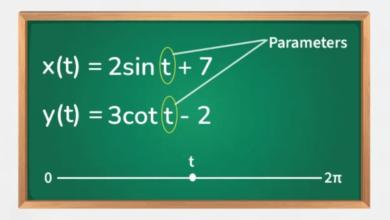Circles are everywhere — in wheels, clocks, coins, and even the layout of buildings. Whether you’re solving a math problem, doing construction work, or simply trying to understand more about shapes, knowing how to find the area and circumference of a circle is an essential skill.
What Is a Circle?
A circle is a perfectly round shape in a two-dimensional plane. Every point on the edge of a circle is equidistant from the center. That fixed distance from the center to any point on the edge is called the radius (denoted as r), while the distance across the circle through the center is the diameter (denoted as d), which is exactly twice the radius:
d = 2r
Understanding this basic relationship helps in calculating both area and circumference.
Area of a Circle
Think of it as the amount of paint you’d need to completely fill the circle’s interior.
Formula for Area
Area (A) = π × r²
Where:
- π (pi) ≈ 3.1416
- r is the radius of the circle
The radius is squared before multiplying by π, making it very important to perform the operations in the correct order.
Example: Area Calculation
Step 1: Square the radius:
5² = 25
Step 2: Multiply by π:
25 × 3.1416 ≈ 78.54
Final Answer:
78.54 cm²
Circumference of a Circle
Formula for Circumference
There are two ways to express the formula, depending on whether you’re given the radius or the diameter.
- Using radius:
C = 2 × π × r
- Using diameter:
C = π × d
Both are equally valid. The choice depends on what information you have.
See also: How do gold candle tins improve the scent retention of scented candles?
Example: Circumference Calculation
Step 1: Multiply by 2:
2 × 5 = 10
Step 2: Multiply by π:
10 × 3.1416 = 31.416
Final Answer:
The circumference is approximately 31.42 cm
Using Diameter Instead of Radius
Sometimes you’ll be given the diameter directly.
Area Using Diameter
If d = 10 cm, then:
Step 1: Convert to radius:
r = d ÷ 2 = 5 cm
Step 2: Use area formula:
A = π × r² = π × 25 = 78.54 cm²
Circumference Using Diameter
Use the formula:
C = π × d = 3.1416 × 10 = 31.42 cm
Why These Formulas Work
The formulas are derived from the fundamental properties of circles and mathematical proofs going back thousands of years. Ancient Greek mathematicians like Archimedes discovered the constant π while working with circular shapes. The π constant represents the ratio between a circle’s circumference and its diameter, and this relationship forms the foundation for both formulas.
Real-Life Uses
Knowing how to find the area and circumference of a circle has many real-world applications:
Architecture and Design
- Calculating space for round tables, windows, or fountains
- Measuring floor areas with circular tiles
Construction
- Estimating materials for circular patios or pillars
Calculating with Technology
You don’t have to do the math by hand. Here’s how to compute circle measurements using modern tools.
Scientific Calculator
Most calculators have a π button and exponent function for easy input.
Excel Formula
To find area:
=PI() * A1^2
(To find circumference with radius in A1):
=2 * PI() * A1
Python Code
import math
radius = 5
area = math.pi * radius ** 2
circumference = 2 * math.pi * radius
print(f”Area: {area}”)
print(f”Circumference: {circumference}”)
Common Mistakes to Avoid
1. Not Squaring the Radius
Always remember: r² means r × r.
3. Incorrect Use of π
Using rounded versions of π (like 3.14) is okay for estimates, but for precise work, use as many digits as needed or the π button on your calculator.
Circle Comparison Table
Here’s a quick reference for circles with various radii:
| Radius (cm) | Area (cm²) | Circumference (cm) |
| 2 | 12.57 | 12.57 |
| 4 | 50.27 | 25.13 |
| 6 | 113.10 | 37.70 |
| 8 | 201.06 | 50.27 |
| 10 | 314.16 | 62.83 |
Notice how both area and circumference increase with the radius, but the area grows faster because the radius is squared.
Practical Exercise
Try calculating the area and circumference of a garden with a circular layout that has a diameter of 12 meters.
- Radius = 6 meters
- Area = π × 6² = 113.10 m²
Final Thoughts
These calculations are not just academic—they are essential in countless professional, industrial, and creative tasks. By mastering these simple but powerful formulas, you unlock the ability to analyze and design circular spaces accurately and confidently.
Whether you’re a student, engineer, artist, or just someone doing home improvement, this knowledge empowers you to make precise measurements and informed decisions every day.



